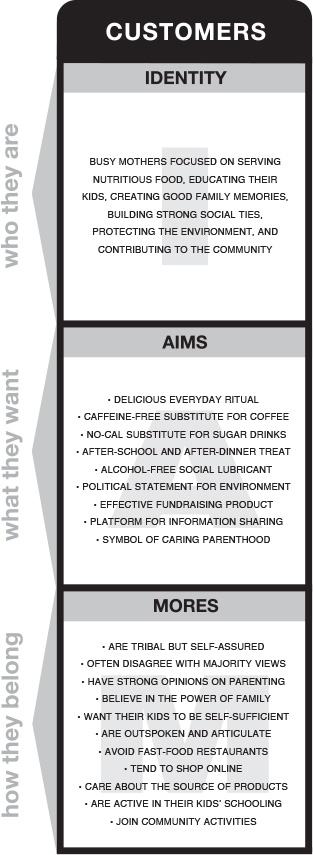TRANSACTIONS  RELATIONSHIPS
RELATIONSHIPS
A sale requires a single transaction. A brand requires thousands or even millions of transactions, plus a huge number of relationships. To manage these relationships, you need to master the complex machinery of brand building. “Master” may be too strong a word, since no one can fully master such a creative, dynamic discipline. You’ll occasionally get confused by all the cables, levers, meters, dials, and switches.
My advice? Keep it simple. Start with a document that maps out the basic contract between you and your customer. Then build it out element by element, move by move. With each new element or move, go back to the original contract and make sure you haven’t violated its terms. If your brand effort gets off course (and it probably will), go right back to basics.
This brings me to the Brand Commitment Matrix, the simple tool at the heart of this book.
Here’s how it works. Two columns, one for customers and one for the company. Each column contains three key statements. For customers, the statements will describe their IDENTITY (who they are), their AIMS (what they want), and their tribe’s MORES (how they belong). These form the acronym IAM.

For the company, the statements will describe its PURPOSE (why we exist), its ONLYNESS (what we offer), and its VALUES (how we behave). These form the acronym POV.
The statements in each column should line up horizontally: customer identity and company purpose should align; customer aims and product “onlyness” should support each other; and tribal mores and company values should be in sync. If they don’t align, what you have is a broken brand. If they do, you have the basis for a rich and productive relationship.
Let’s use Lori’s business idea to fill in the customer side of the matrix. In the IDENTITY space at the top, we’ll take a stab at a customer vision. What does she want her customers to become? “Busy mothers” who believe their contribution to their families and communities can resonate for generations sounds about right. But can chocolate tea accomplish such a lofty goal? We’ll see.
Next, let’s list the customer AIMS. These are the benefits that the product offers, from providing a coffee substitute to turning a waste product into a healthy habit. We should also address the other needs: time savings, healthy alternatives, school prioritization, family memories, social ties, and environmental concerns.
Finally, we’ll list the rules, the MORES, of the mom-blogger tribe. These include a rejection of fast food, a family-first attitude, and a desire to collaborate with other moms through social media. They also include a high level of school involvement and a fair amount of community volunteering.
We’ve just completed the customer side of the Brand Commitment Matrix, a simple plan for partnership. This view of branding assumes the dawn of a “post-consumer world,” in which the brand is the joint property of the company and the customer—the badge under which the customer builds her identity and creates her best self.
Now let’s move over to the company side.

